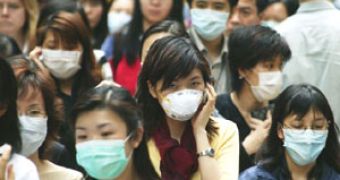The chlorine insecticides, like DDT, are known to move through the food chain and to make bald eagle lay paper thin shelled eggs or poison the milk of the Inuit (Eskimo) women. The amounts thrown on the fields may look minute but once these carcinogens enter the food chain in small levels, starting with the microscopic algae, it binds to the fat molecules and reaches an increasingly higher concentration (a process named biomagnification) while moving from algae to larvae, fish and eagle or to seal and Inuit.
That's why they were banned in the 70's in U.S. Thousands of everyday chemicals have been checked for their safety by assessing how easily they dissolve in water versus fat. The water-loving ones do not build up in the food chain. But this approach ignores another way for accumulation: air.
A new research has assessed how easily a chemical travels from the lungs into the air versus how easily it dissolves in fats and water. It appeared that thousands of contaminants can build up in air-breathing animals, if not water-breathing ones. Many chemicals that dissolve relatively easy in water can persist in the air, accumulating "specifically in nonaquatic food webs: mammals, birds, human beings. In mammals and humans, we don't breathe water, we breathe air," said lead researcher Frank Gobas, an environmental toxicologist at Simon Fraser University in British Columbia.
His team checked about 12,000 chemicals under review by the Canadian government to assess their environmental and health effects; about 30 % of them could be stored by air-breathing organisms. One example is the pesticide lindane, employed on crops but also to treat head lice, which does not accumulate in fish but it does in Canadian wolves that had eaten caribou, which in turn had been feeding on lichen.
"About one third of all the commercial chemicals that are in use right now belong in this group of chemicals that are potentially biomagnifying. In Canada, it will be three to four thousand. And our list of chemicals is small compared to the list of chemicals in the U.S. and E.U. The total chemical count could reach as high as 10,000 worldwide, though most, if not all, will prove benign because many may be broken down by cellular processes." said Gobas.
But there are no researches on the issue.
"We are not very good at predicting or measuring how quickly chemicals are being broken down by organisms. [Metabolism] information is missing for more than 90 % of the chemicals in commerce, which is a big problem." said Gobas.
The potentially toxic chemicals vary from crop pesticides to those employed in perfumes and fabrics.
"Many years down the road, we hope to relate [metabolic transformation rates] to the physical, chemical nature of substances. Based on structure, we would like to have a better way of estimating metabolic rates and therefore bioaccumulation capacity. In the meantime, it might make sense to test the airborne as well as the waterborne bioaccumulation potential of chemicals," said Gobas.

 14 DAY TRIAL //
14 DAY TRIAL //